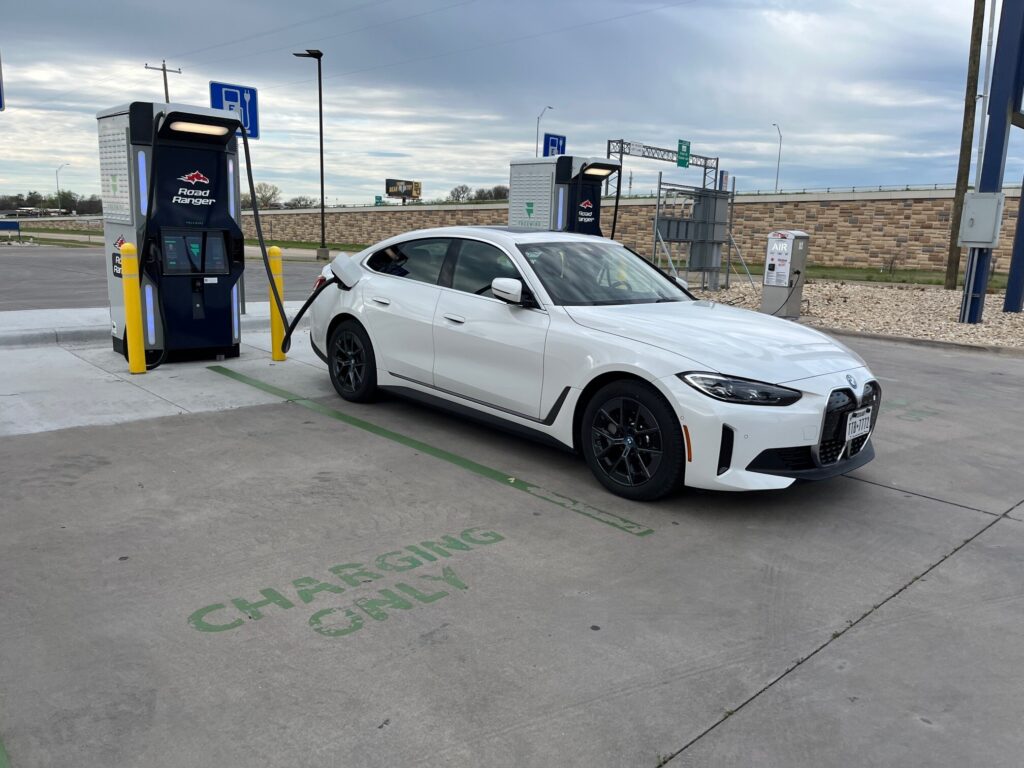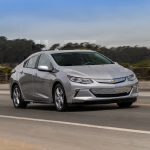Last fall I wrote about the challenges driving our new PHEV for business, and how I was convinced that a ICE engine was still a requirement. It turns out that such conclusions may need to be made regionally…
This past week, I’ve been in Texas for a couple of conferences. One of them was over the weekend, and while working on the weekend isn’t fun, it was fun that Nicole could join me for a day exploring the lovely city of Austin during the South-by-Southwest Festival. We ate Texas sized steak, went to an exclusive rooftop party (that was totally not our kind of scene), hit some golf balls, and took a nice boat tour on the lake. Monday morning, I dropped her at the airport, and headed to the second conference, 192 miles away in Dallas… in an all electric rental car.




They told us when we picked it up that it was a hybrid, which I felt comfortable with. We were 20 minutes away, in downtown traffic, before I realized that there was no gas gauge — only a battery gauge, slowly dropping. We briefly entertained turning around to exchange the car, but decided that by now, we should know how to make this work. Besides, it was a brand new BMW i4, fully loaded and very, very nice to drive.
Our hotel in Austin had standard AC charging equipment, and enough of it functional that we were able to charge up fully. I planned my road trip with a stop at a “Fast Charger” on the highway, and crossed my fingers that the infrastructure would be better in Texas than in the Midwest. I was not disappointed.
There are two kinds of chargers (well, there are lots of kinds of chargers, but for non-Tesla owners, two that matter.)
An AC charger is highly variable in speed, depending on how many amps the outlet can provide. On our cars, with relatively small batteries, a standard 10amp outlet will provide the full 55-75 mile (depending on the car) range in about 12 hours. A 20amp outlet will do the same in about 5 hours.

A DC Fast Charger is expensive equipment, with a big, fat intimidating connector, on a three-phase connection, that dumps juice into the car as fast as it will take it. You can’t install these at home, but where the infrastructure exists, they are a game changer. My rental car charged from 62% to 100% in the time it took me to eat lunch, giving me a fresh range estimate of 295 miles. It requires having a couple different apps on your phone to get access to the equipment from various providers, but here in Texas, its been easy to find well-serviced, clean, and functional DC Fast chargers every 100 miles or so. This is a big State, so I’m sure there are spots that are more barren, but everywhere I’ve needed to go has been easily within range. This evening I drive back from Dallas to Austin to catch a flight home tomorrow. Worst case, I don’t charge at all, and return the rental with ~35% battery left.
As they say on these internets, YMMV, but if you can afford a modern all-electric car, and live in an area with good charging infrastructure, driving an EV as your primary — or even only — vehicle, is possible. In some places, the future is now. Turns out its the U.S. Midwest that hasn’t gotten there yet…



